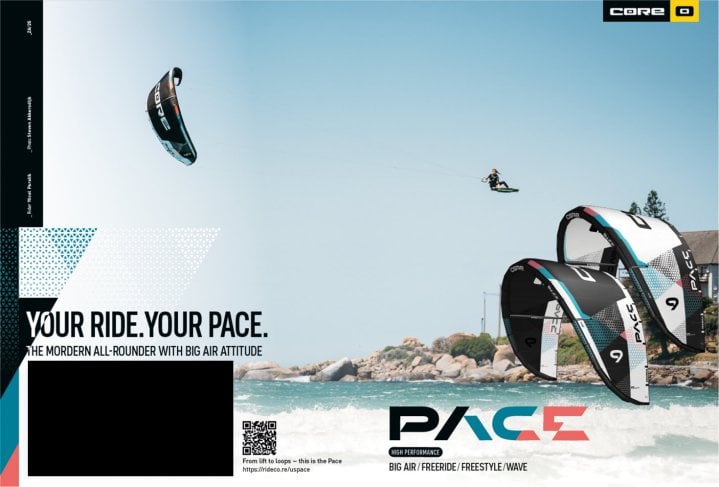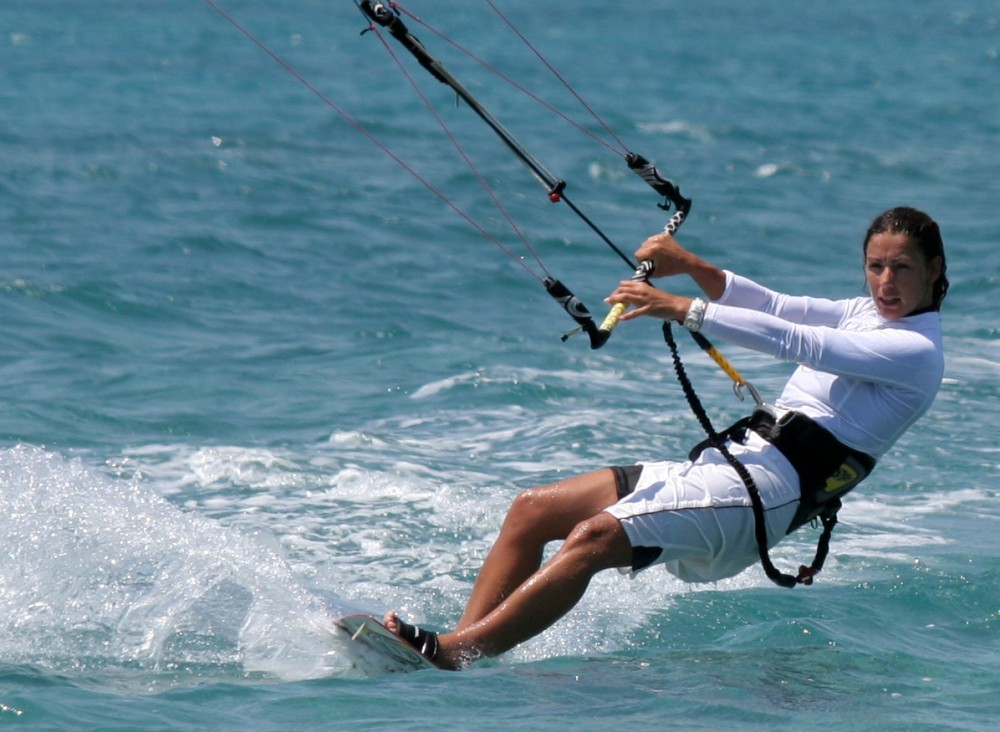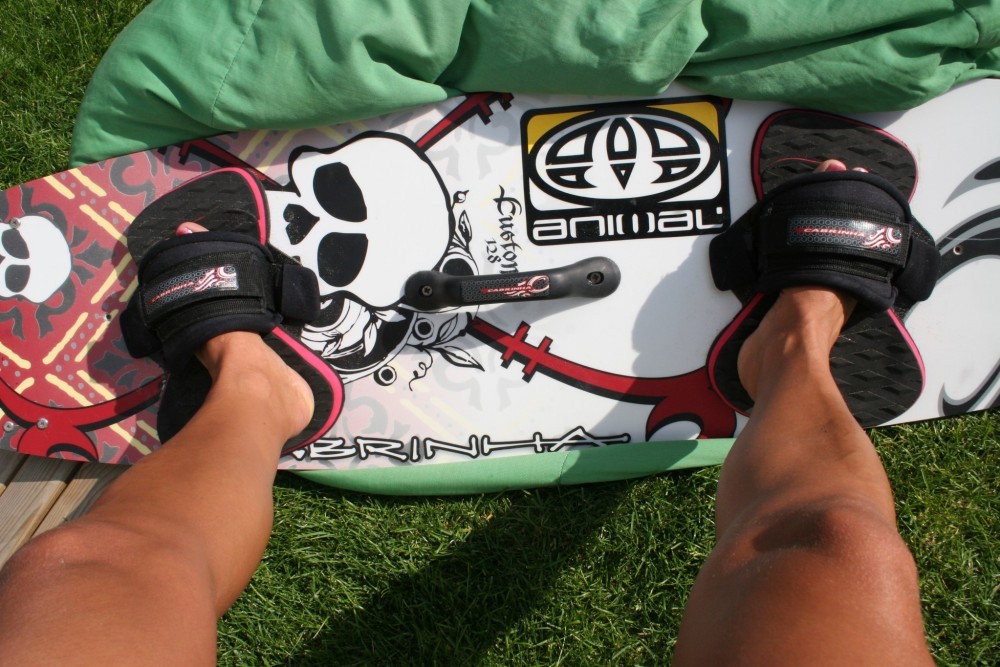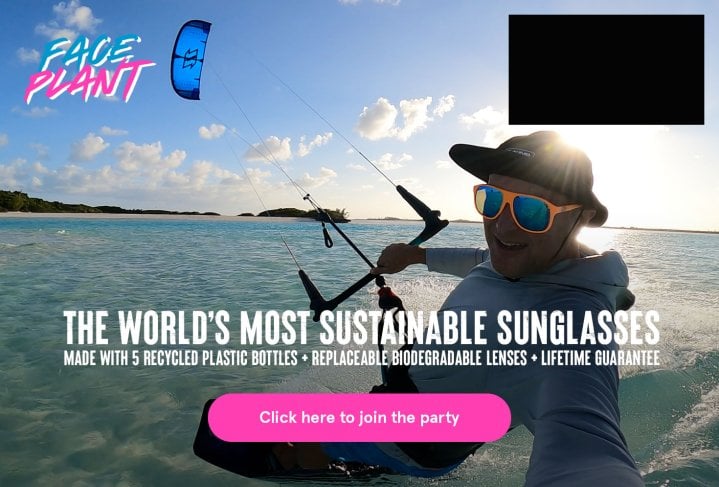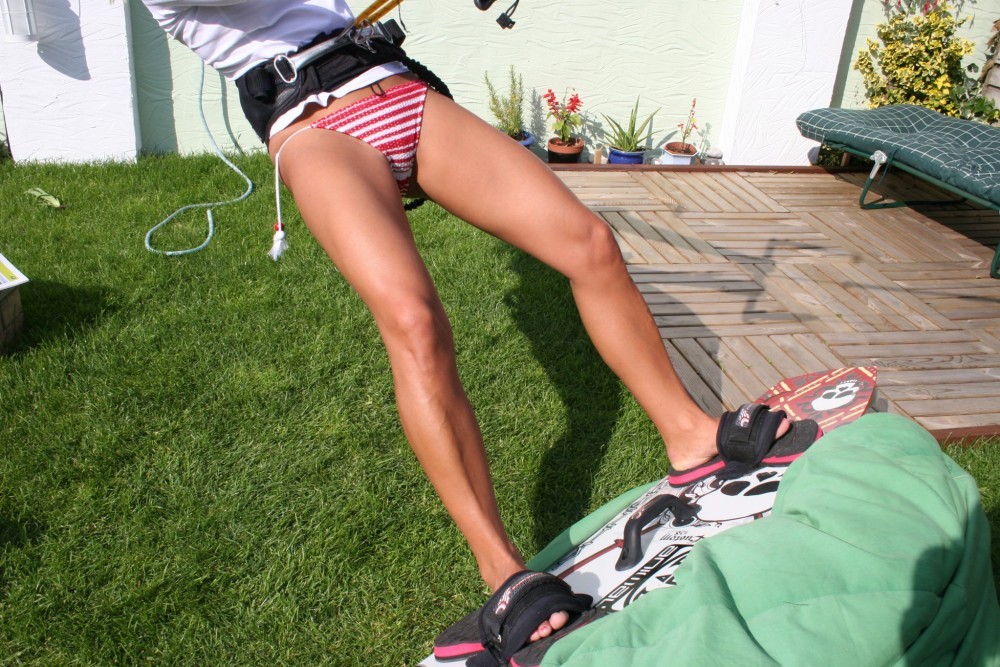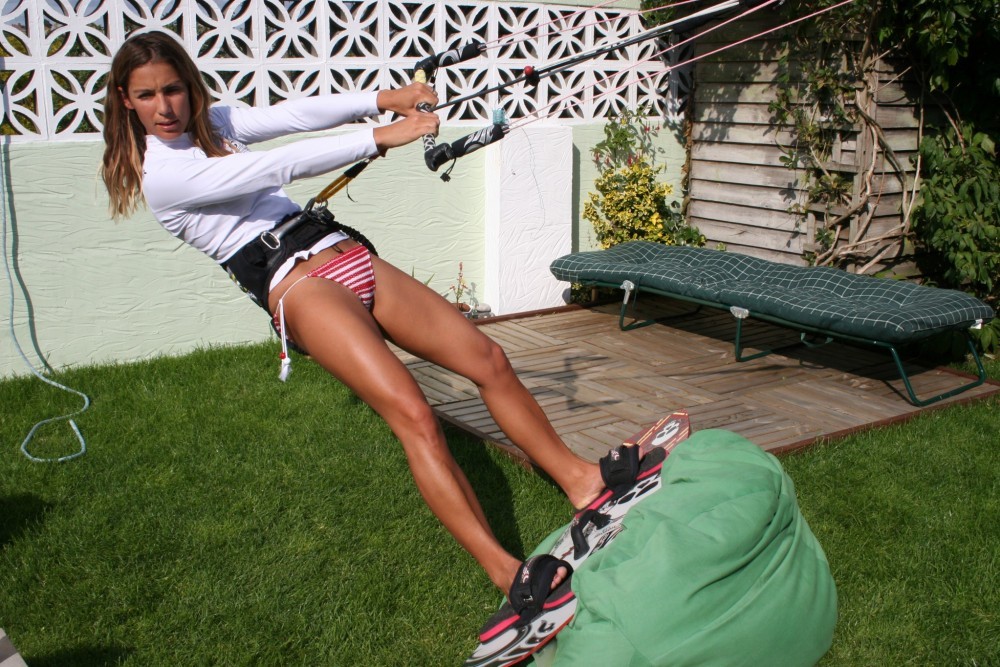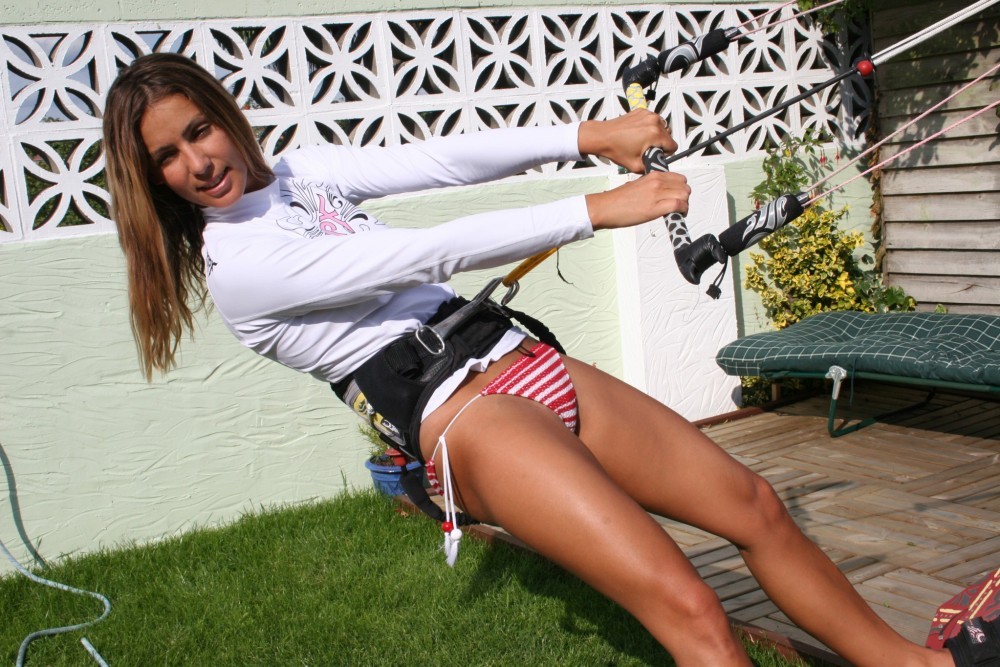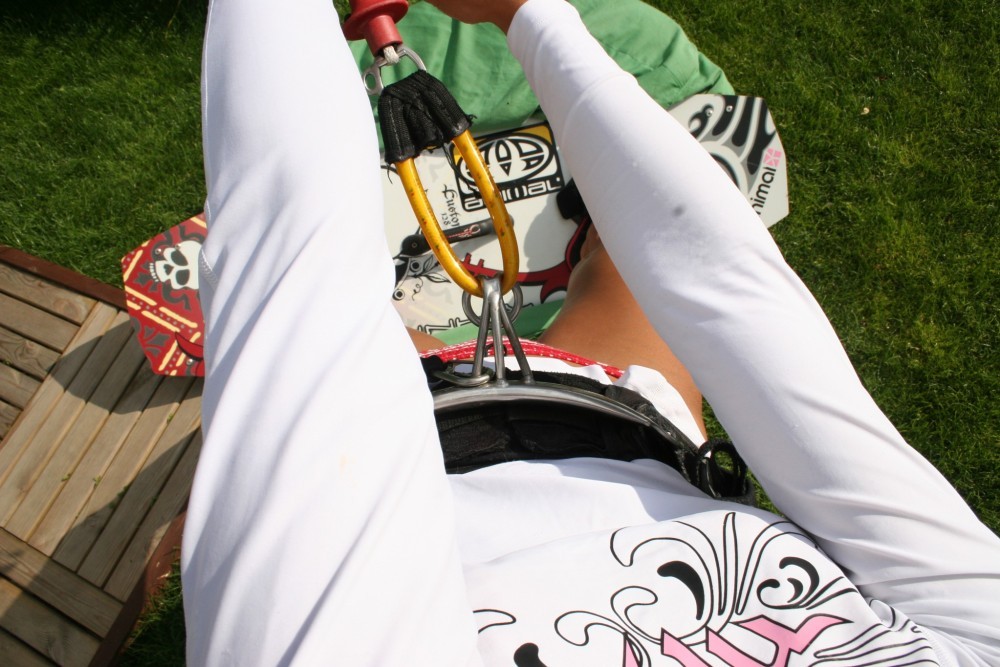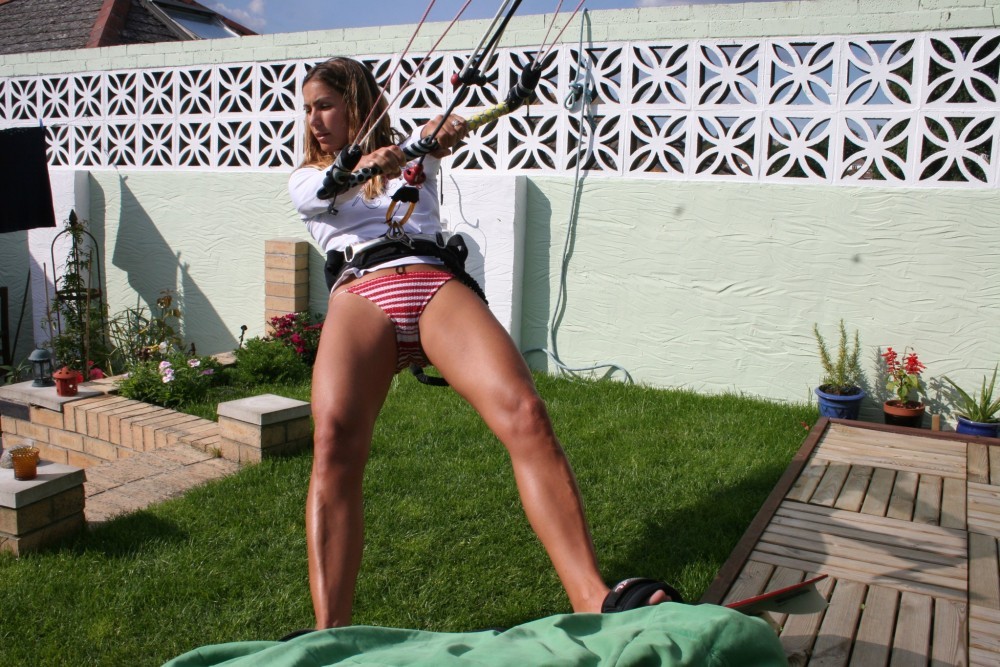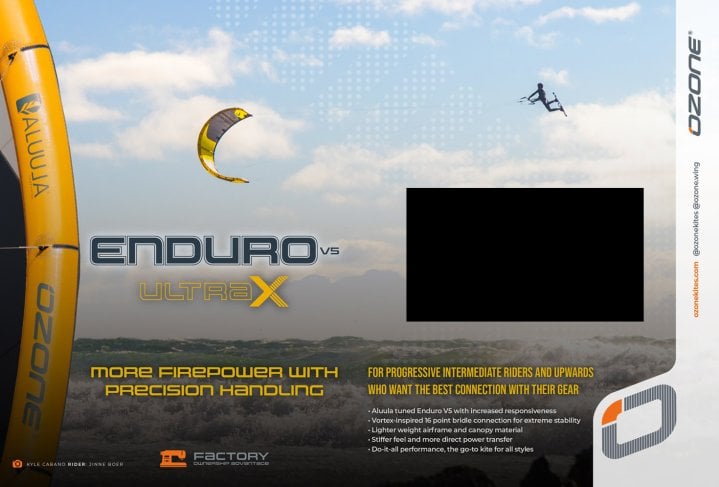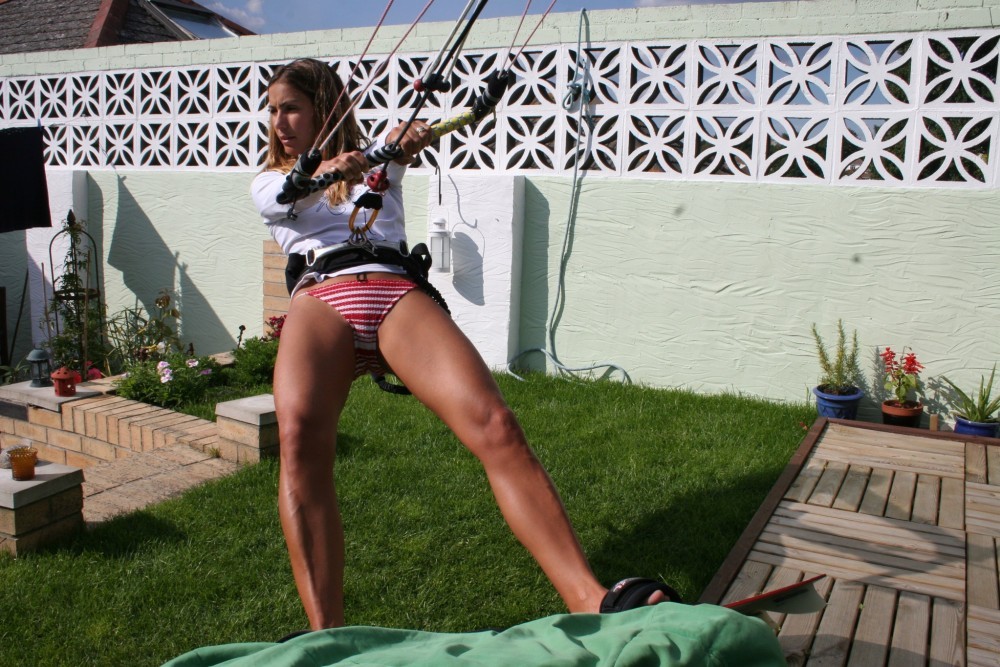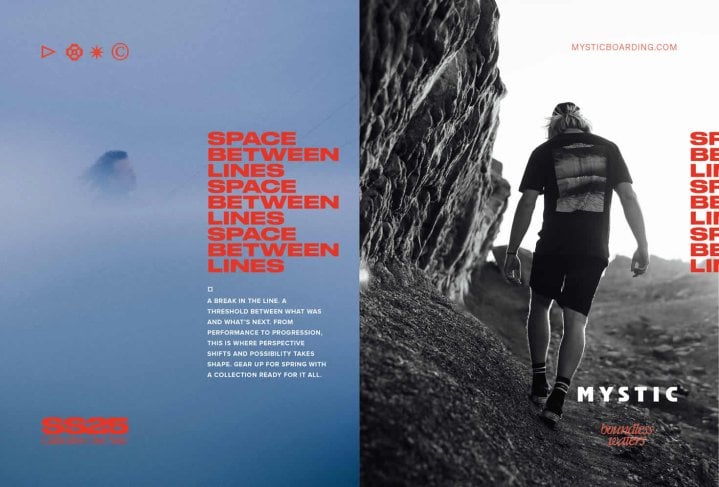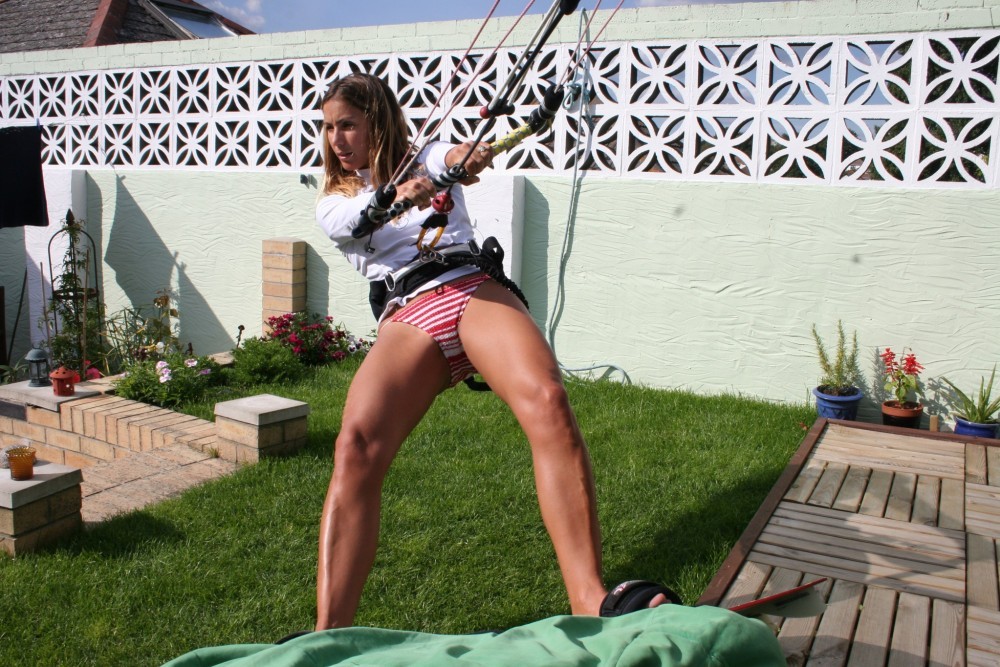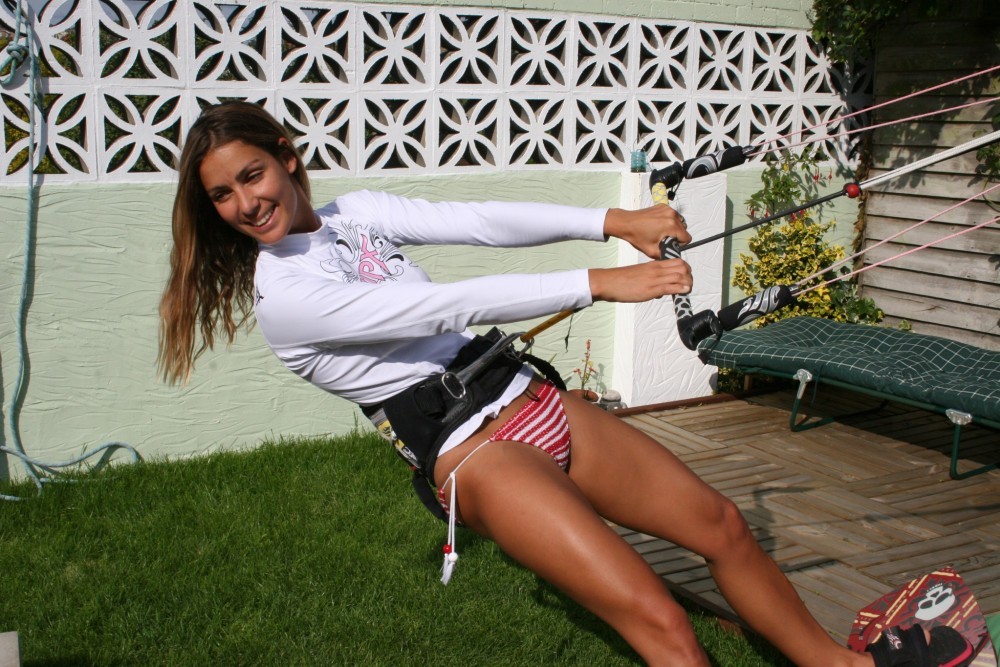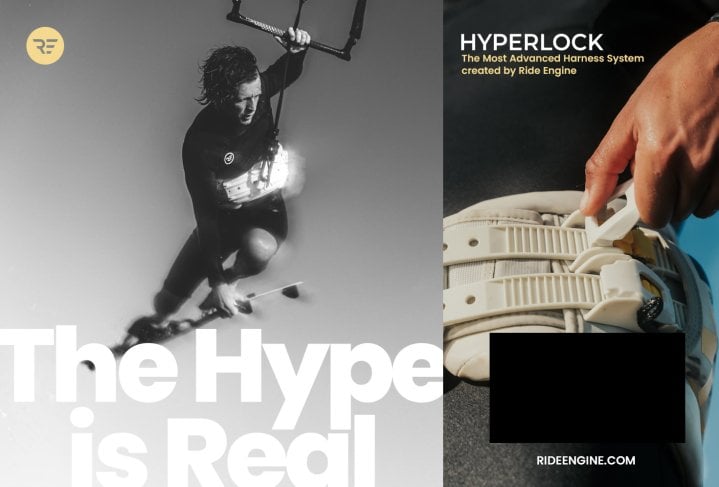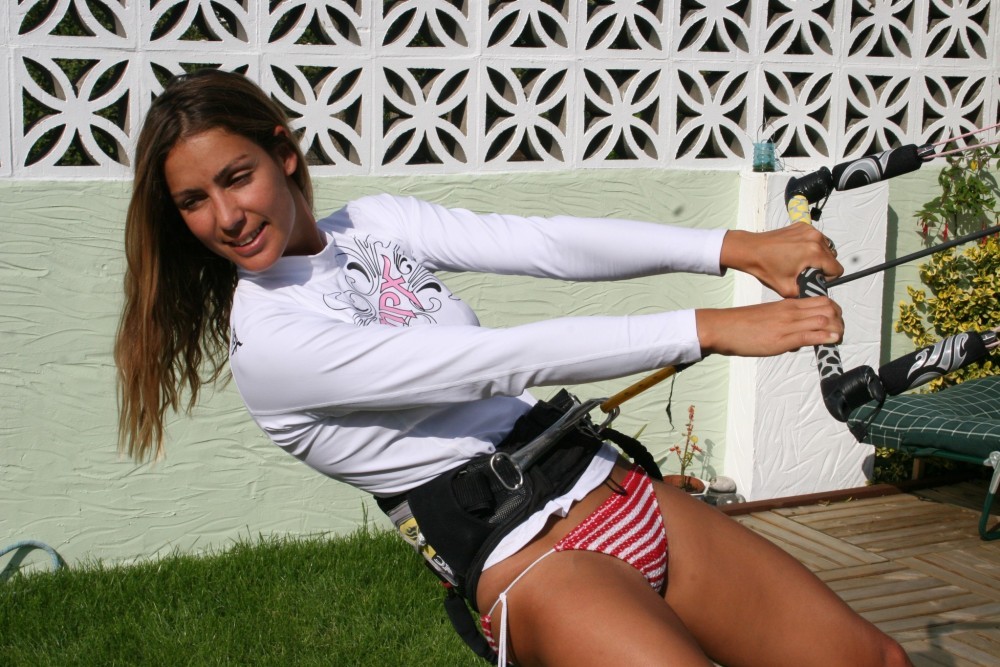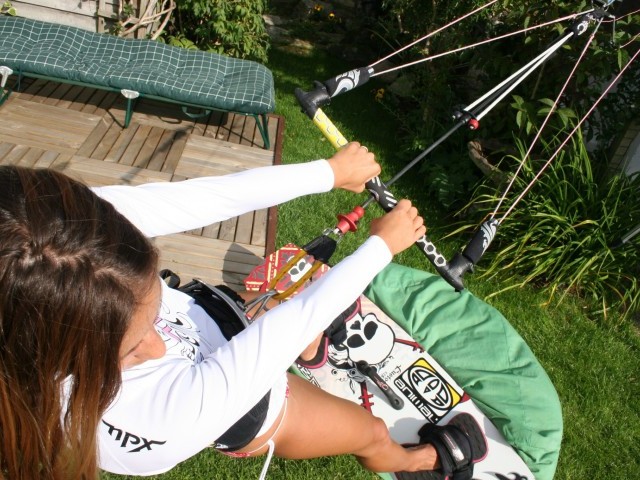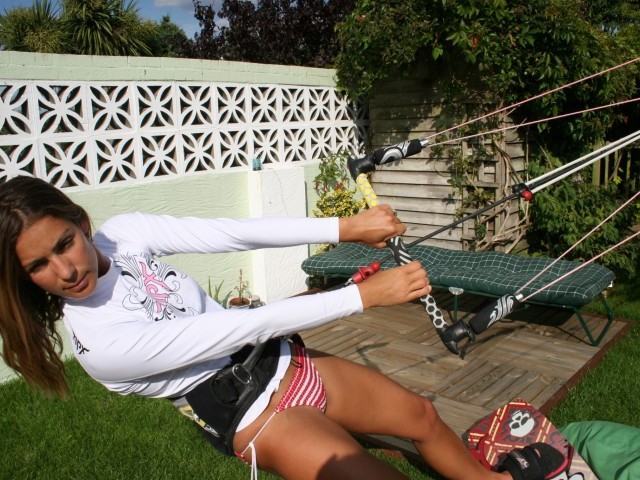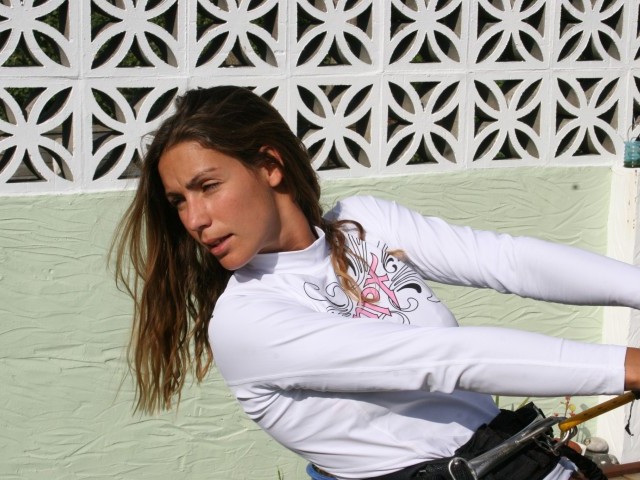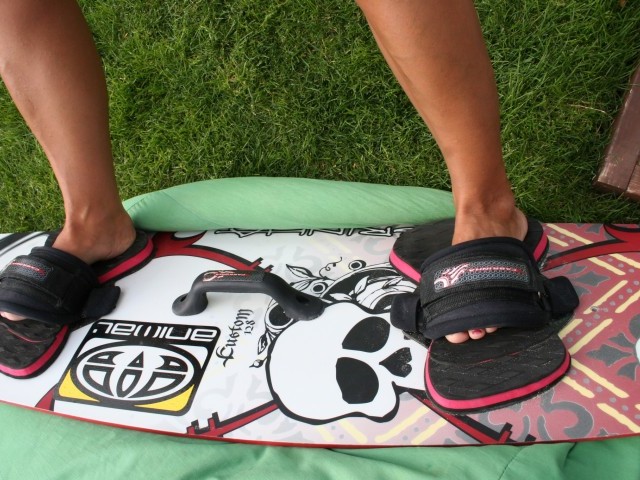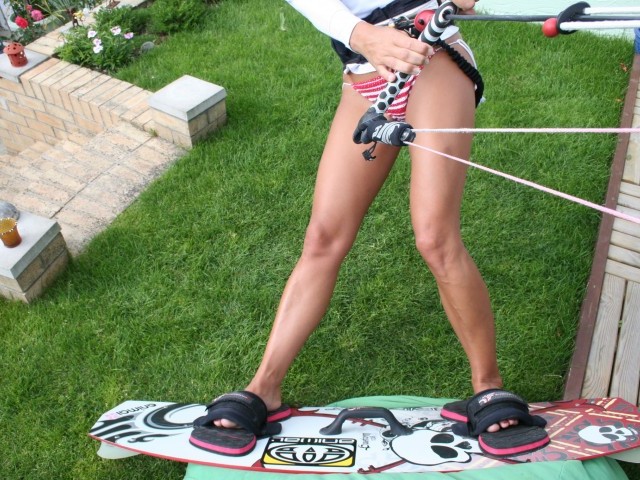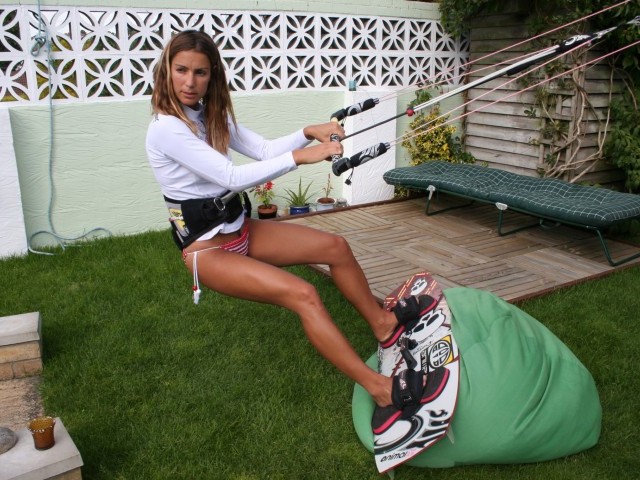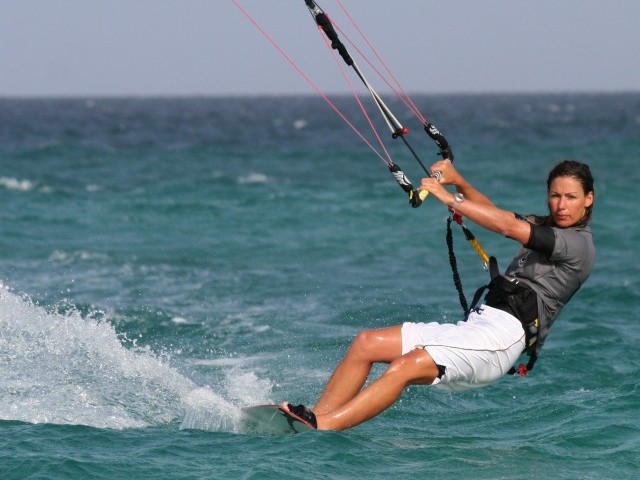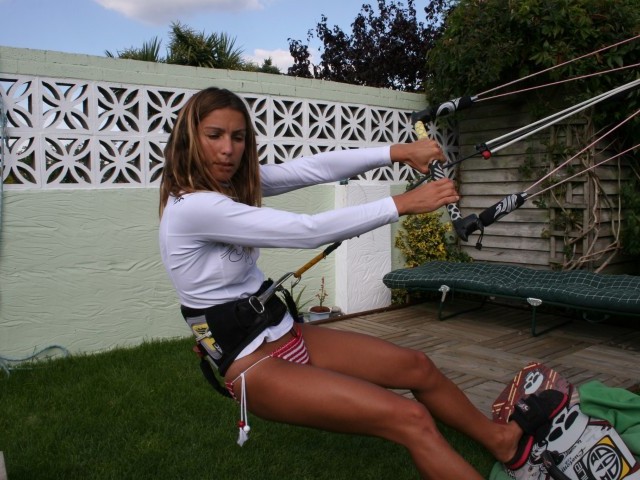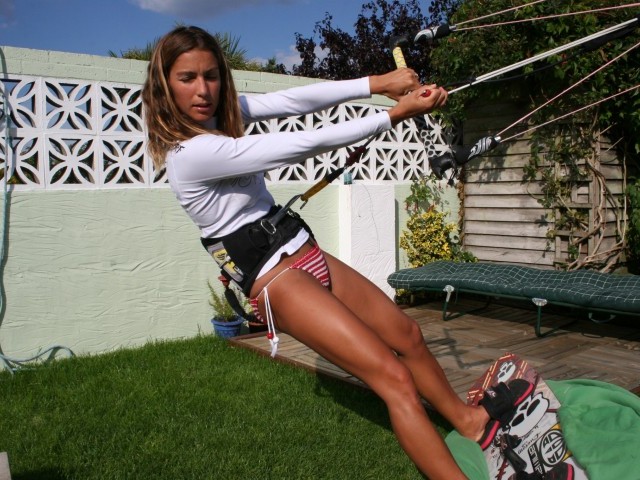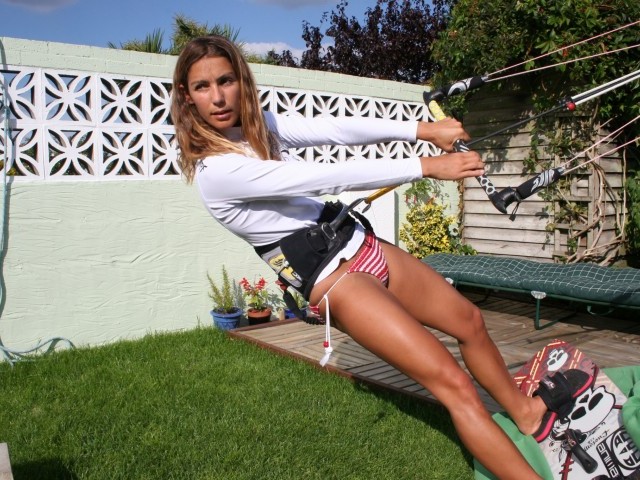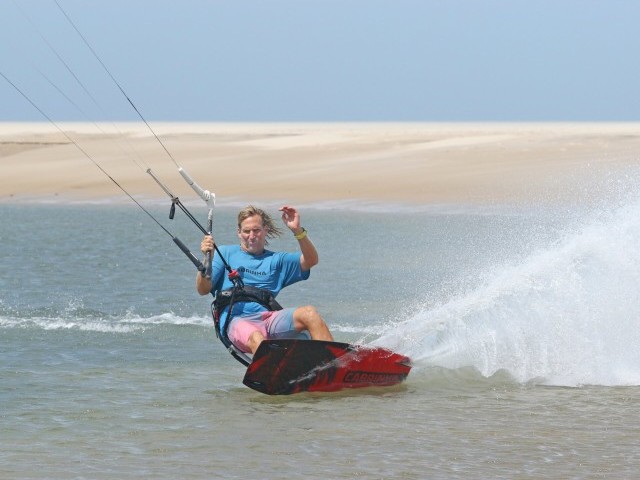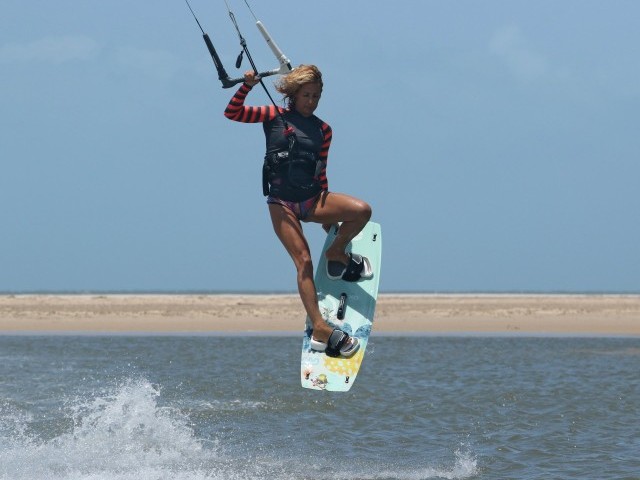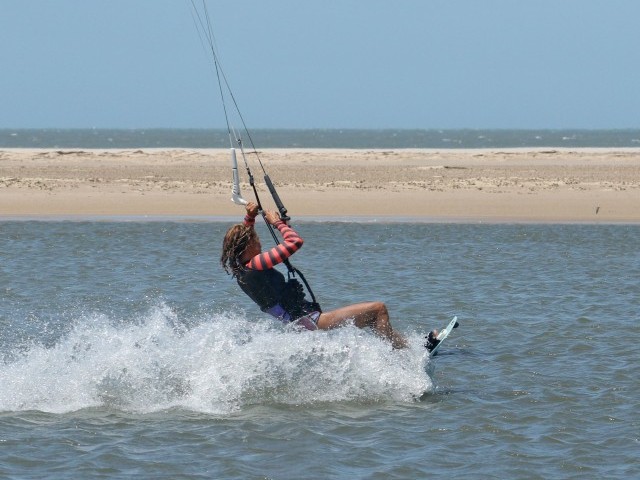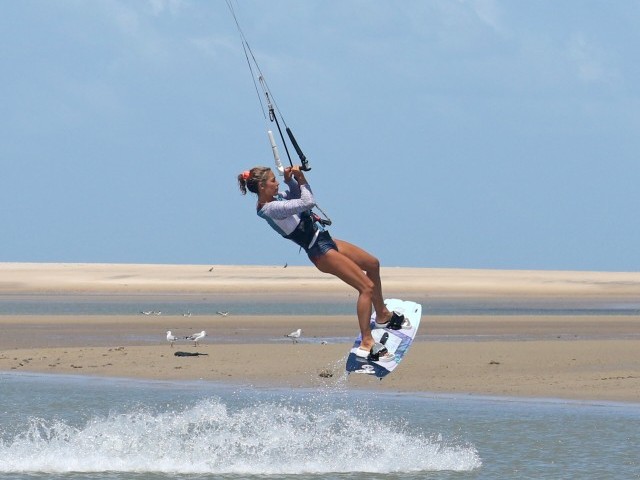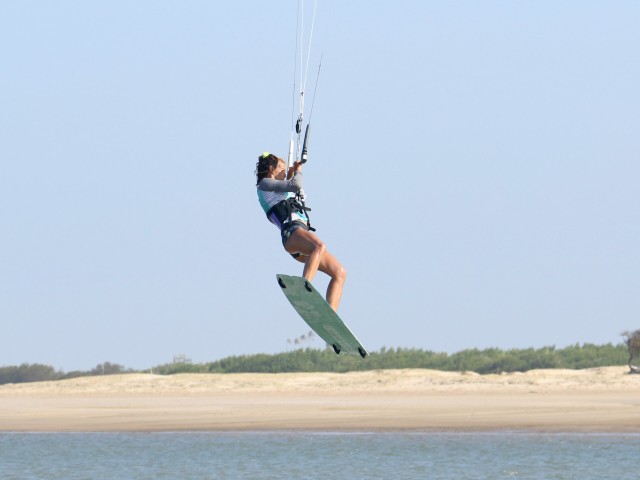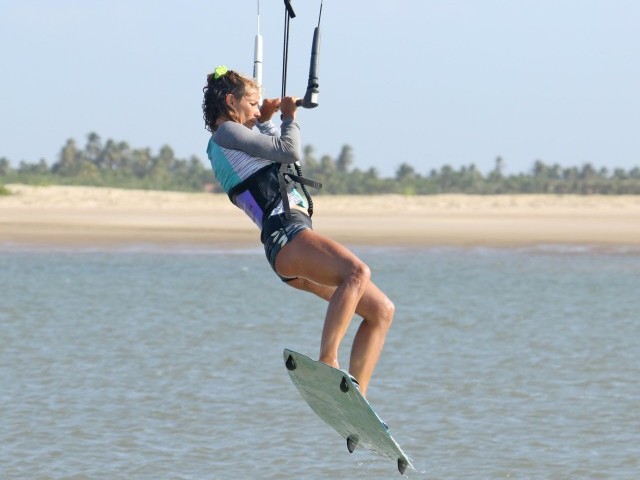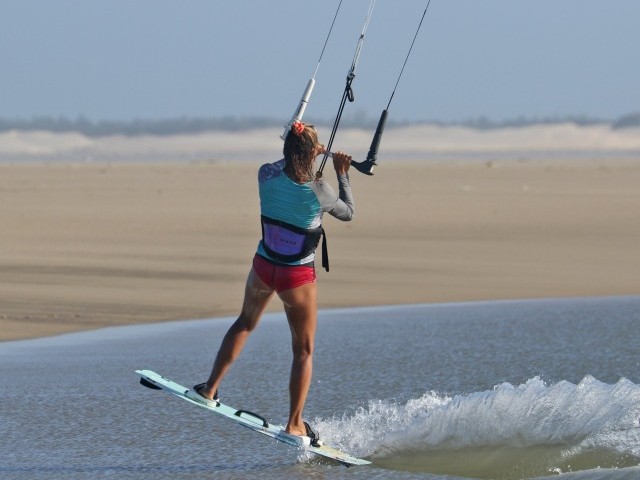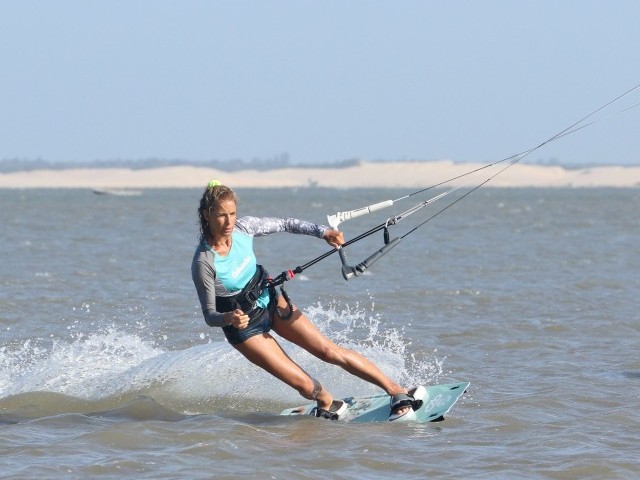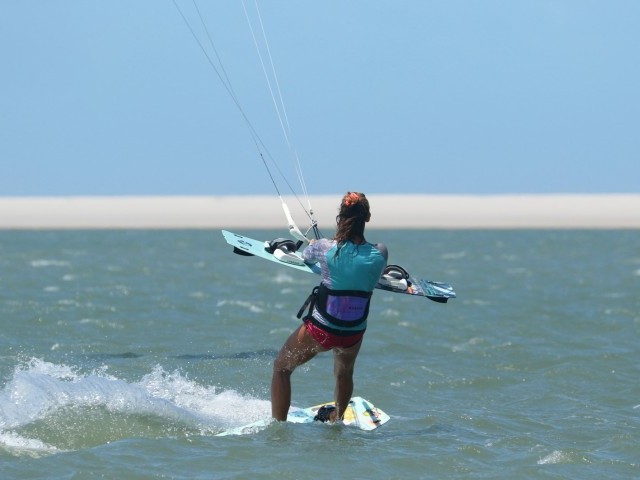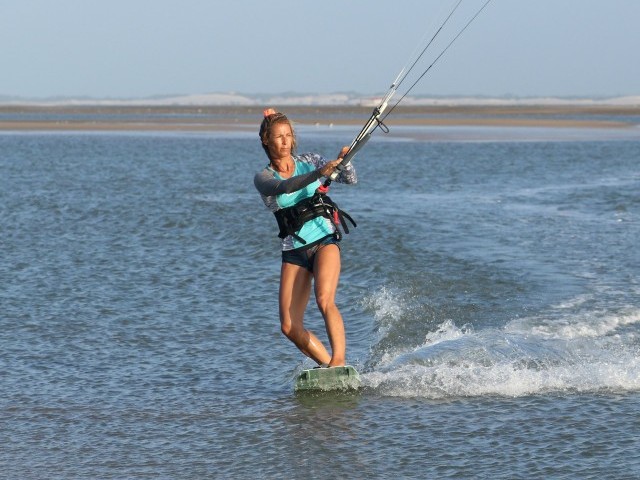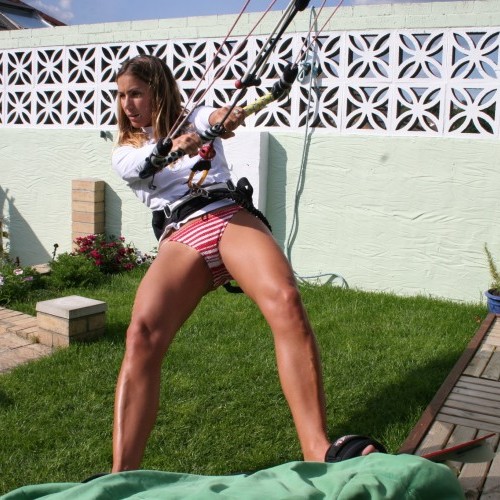
Stance
Technique / Beginner
Introduction
Stance, body position, posture: the way in which we hold ourselves on the board is the ultimate foundation, principle numero uno, THE fundamental of everything that we try and achieve in kitesurfing. From the outset of getting up on the board, rocking upwind, resisting for take-off, popping, getting out through the lumpy stuff and anything else which requires you to be master of kite and board. The ability to relax, enjoy and control, whether man or woman, small or tall, fat or thin, regardless of your level, starts here.
Chaos Theory
The best way to understand it all is to break it down and examine what each (relevant) body part, from head to toes (actually toes to head), should be doing, and why. Hooking yourself up to something solid on terra firma will make this a whole lot easier, and will actually let you feel the subtle differences without the distraction of the elements. Once complete just put all the blocks together et voila… Pic A and Video 1. In the following pictures assume that Karine is riding to her right.
Feet
All your weight, and all the power from the kite can only get to the board via your feet, so they need to be right. Chaplin rules! Regardless which way you are going both feet should be pointing out and away from each other, heels close, toes apart. Your toes should be pulling up on the straps. With your pinkies thus (Pic 1) the board will be forced down on the heel side edge.
Knees
If you grew up riding horses this is for you…, bow legs, bow kites, whatever next? Both knees need to be soft and flexible and pointing out over your feet. From above it should look like you could be kiting in either direction. Like this (Pic 2) you can absorb chop, and you are not frozen in one position, but rather in a “ready” position, from which you can shift your body weight in order to maintain balance.
Legs
Your legs should be working together, bending over bumps, and straightening into troughs. Their main aim however, is to push the board away from you (Pic 3). You’re not a passenger but the driver, and the more you push away from the board, the more power you will create, the more comfortable the ride will be and the better you will go upwind. Pushing the board can also help get the board in between you and the kite.
Hips, Hips
Glorious hips! These beauties are really useful and very multi tasking, so they need taming. Your wiggling hips have three jobs
Love the Bar
Job number one for them is some good old-fashioned loving. Your motto whilst riding should be “LOVE THE BAR”, as it’s all about intimacy, so get your hips up and close to the bar, hmmm. If you don’t fancy the idea of getting carnal in rubber, imagine that your keys have come loose and are sliding down the back of your wetsuit (apologies if you’re kiting somewhere warm). Rather than loose them to Neptune clasp them between your buttocks and hold on tight (Pic 4).
This pushing and squeezing helps get the board between you and the kite, as opposed to the board being underneath you. In a tug of war you would not stand up, but lean – here too. Now any power will go through your pushing legs and drive the board, and because your derriere is up, you can get low, as it won’t be slapping any sea.
A Sense of Direction
Your hips determine, with a little help from the kite, which way you are going. That is to say that if you wait in that ready position you could well just slide after the kite (sound familiar?). In order to get you comfortably riding; your hips need to face the pull of the kite. As your harness is attached around here, if you point the hook at the kite you’ll be spot on (Pic 5).
The 3 Degrees
As you are no doubt aware there is more to life than just in and out. A little movement sideways can make a huge difference.
In your ready position you have equal weight on both feet, and it looks pretty ambiguous as to which way you could travel (Pic 6). This may be perfect with comfortable power in your kite, if your hook is following the kite.
If you find that you are a tad underpowered and need to get more of the board’s edge in the water to get back upwind, you can rock you hips just a couple of inches towards the front of the board, more over the front knee as in (Pic 7).
Once you are tanking along with plenty of power, you will need to drop you weight over the back foot, by moving you hips back a touch, essential for jumping and popping (Pic 8).
By doing this you are utilising the boards design. When you rock forward you could be using the flatter section to encourage planning, and/or upwind performance. When you rock back over the curvy tail (rocker), this turns the board up and away from the kite. Clever stuff. Try this on the beach and you’ll notice how the board turns as a result.
Shoulders
You shoulders need to lean back, away from the kite. This allows the hips to stay up, and keeps your weight out away from the board. Yet again the power will now be transferred into the boards edge. They also need to twist with the hips, otherwise the board can slide. By twisting the shoulders, the leading shoulder will drop nearer to the water and once again gives you the ability to resist a lot more power. Keeping the board between you and the kite should prevent those unwanted nose-dives by encouraging your weight back on the board. This position (Pic 9) is the result of all the previously mentioned positions and offers you the chance to drive down through the back foot, and really turn the board upwind.
Arms
Following on from the shoulders, you can see that it would be impossible to push them back if you didn’t straighten your arms. However, if you straighten you arms but don’t get your shoulders back, it will have a dramatic affect on the position of the bar and sweet spot (see previous article). Hence the desperate need to trim your kite correctly. It’s almost a rowing action, moving the shoulders back, with straight arms, lifts the hips and pushes the board away between you and the kite. Poetry in motion (Pic 10).
Slight of Hands
Don’t grip onto the bar as if you life depends on it. If you relax and smile park and ride heaven could be just around the corner. Your hands should be no further than shoulder width apart on the bar, but to be honest unless you’re under powered (when a wide grip gives more leverage) it’s good practice to get your hands closer as in (Pic 11). To make the kite respond quicker with your hands closer, you will need to use both of them to steer the kite, by pushing with one as you pull with the other.
You should also aim to keep the bar parallel to the kite’s leading edge, as opposed to the water. So as the kite dives forward in the window, follow it with the bar (Pic 12). Now you will have equal tension on both back lines, which should give you a better feeling for where the kite is without the need to look at it. And your new found stance will feel a whole lot more comfy as this also helps with keeping the leading shoulder lower.
Heads It Is
For whatever reason the average human head is mighty heavy, so you may as well use yours. Leaning you head out adds ballast against the power of your kite. Your body will generally follow the head, so it will help keep you straighter stance. If you bring your head forward, your shoulders will follow and you could end up back over the board.
For the very same reason look where you want to go, not where you are going. When aiming upwind, look even further upwind than you think is possible. If your head is back and twisted around looking at some reference point (Pic 13) where you’d like to go, you’ll still see the kite in your peripheral vision, so no cheeky peeks.
1. The Bad and the Ugly - Down below
In (Pic 14) you can see crimes often committed down below. Karine has adopted a rather fetching “alpine” stance. Hands up if you’re guilty. This can be the body’s natural reaction to twisting forward, and must be avoided.
The toes on Karine’s back foot have twisted forward (Pic 15), with the heel further back, which puts the weight, and power of the kite onto the ball of the foot, which could encourage the back of the board to flatten and slide out.
The back knee has tucked cosily in behind the front leg (Pic 16), further reducing any ability to put power through the back foot, and therefore diverting more power through the front foot.
In order to control this power the front leg has to extend. Many people adopt this stance to the extreme of locking their front knee out straight, hoping that this will keep their weight back. In fact it drives more power through the front foot, and this coupled with coming up over the board as it flattens, results in the nose turning off the wind. In turn, you will then accelerate and become glued to the spot as the infamous down wind death run gathers steam. There is often no way back from the resultant Mach 10 (bow lovers can of course sheet out) and it’s game over.
If you try this hanging from a bar you’ll see how easily either the back slides out or the front turns away from you.
2. Up Top
Problems up high are usually the result of sitting down on the job (Pic 17). The unattractive deli belly stance not only looks appalling but also makes life way more difficult than it need be.
As soon as your bum drops, the board will flatten. You will then be unable to resist the power and either start yet another GPS challenging, bouncy run, or catch your toe side edge and enter the world of unintentional front loops. All previous style points vanish.
Some people do manage to sail quite well like this, usually in seat harnesses. If you sail like this in a waist harness you will be doing your back absolutely no favours. It is often the result of sailing with the kite to high (Pic 18). Either way, if you endeavour to love the bar the finest result is more often than not that you don’t need so much power to get you going upwind. Ever wondered why everyone else is on a smaller kite?
If you trim your bar down towards you, but sail bum down, you will have to keep the arms bent to keep tension on the back lines. This is often the reason for not trimming the kite, as sailing arms straight takes all the power out until you lean back.
Bar Trim
In the previous article we talked about trimming you kite. So how does this affect your stance?
In (Pic 19) you can see the bar/sweet spot is far from Karine and her chicken loop, forcing her to roll her shoulders forward, bring her head in, lift the leading shoulder, stop twisting forward. This list of sins will flatten the board off and a decent edge is history.
So Karine grabs the strap, see previous article, (Pic 20) and pulls it down towards her.
The result (Pic 21) is that the bar has moved down towards her, so she can now adopt her perfect stance, forcing the board out in between her and the kite, dropping her front shoulder, pointing her hook at the kite and directing all the power into the boards edge. Brilliant.
The Kite
As a final thought, where you fly your kite will affect you stance. If you ride with you kite at about 45, it will be much easier to drop low and edge against the power, see video 2. If it’s too high you’ll feel out of control as you will be constantly lifted off your edge.
So there is an awful lot to think about, but at the same time it’s a great way to play on windless days. Once you take it out onto the water, just remember that you stance will need to be pro-active, constantly adjusting to the world around you, and don’t forget to work the strap. Good Luck.
This technique article was in Issue 5 of IKSURFMAG.
Related
By Christian and Karine
Christian and Karine have been working together as a coaching team, running improver to advanced kitesurfing clinics since 2003.



